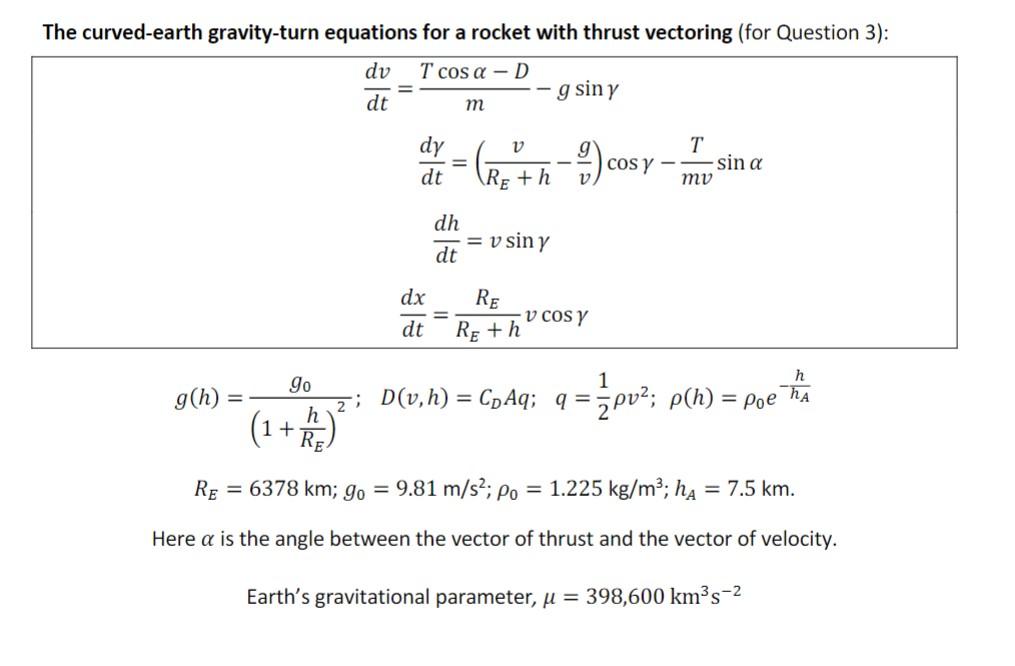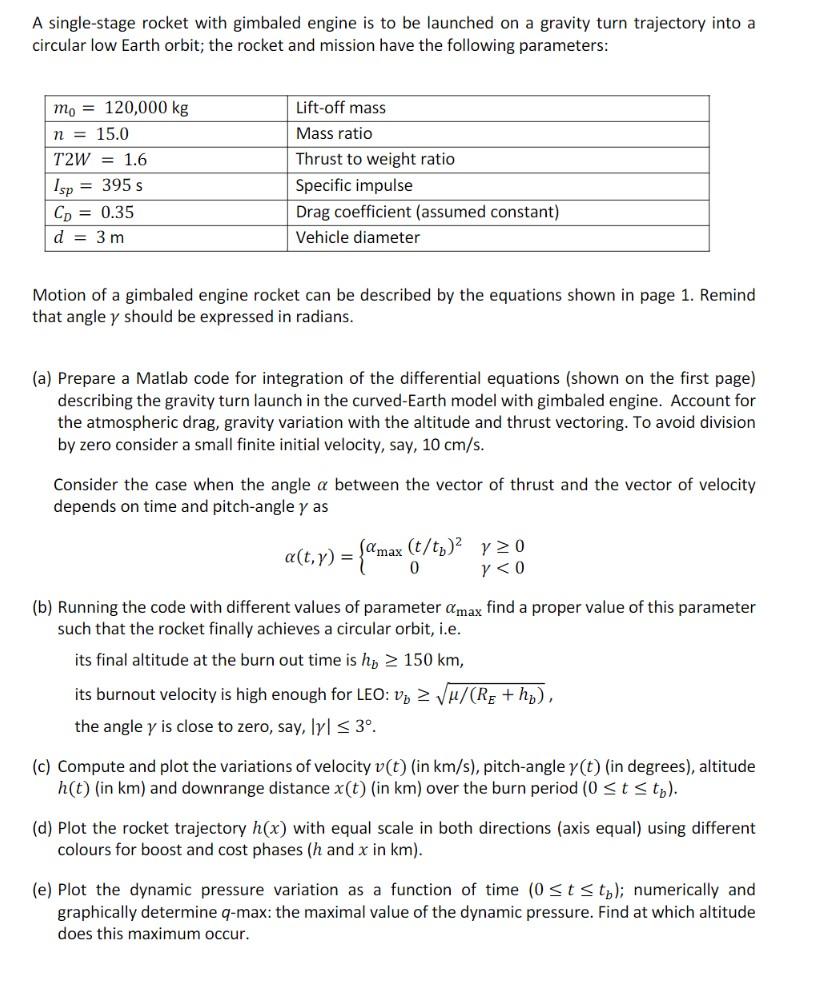Answered step by step
Verified Expert Solution
Question
1 Approved Answer
The curved-earth gravity-turn equations for a rocket with thrust vectoring (for Question 3): dtdv=mTcosDgsindtd=(RE+hvvg)cosmvTsindtdh=vsindtdx=RE+hREvcosg(h)=(1+REh)2g0;D(v,h)=CDAq;q=21v2;(h)=0ehAhRE=6378km;g0=9.81m/s2;0=1.225kg/m3;hA=7.5km. Here is the angle between the vector of thrust and the


Step by Step Solution
There are 3 Steps involved in it
Step: 1

Get Instant Access to Expert-Tailored Solutions
See step-by-step solutions with expert insights and AI powered tools for academic success
Step: 2

Step: 3

Ace Your Homework with AI
Get the answers you need in no time with our AI-driven, step-by-step assistance
Get Started


